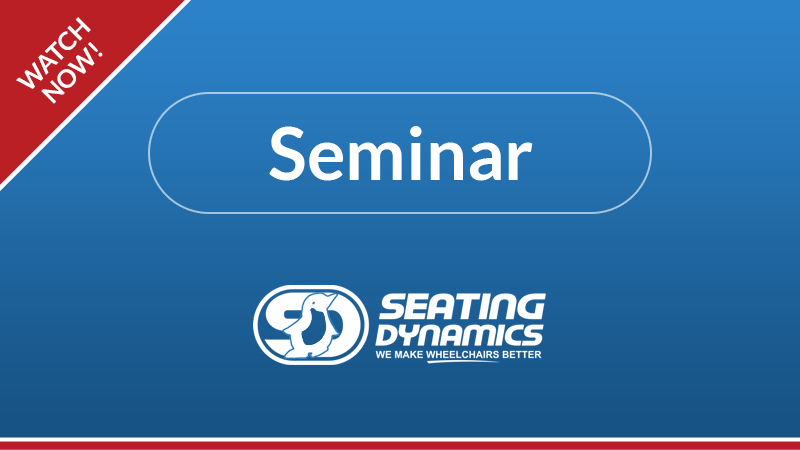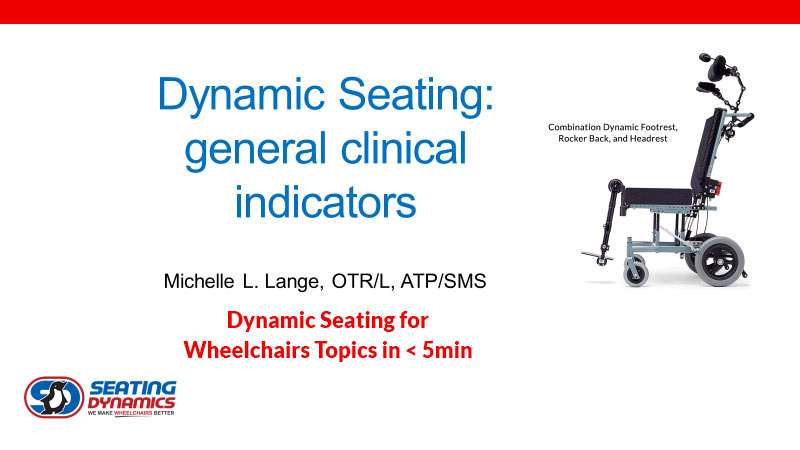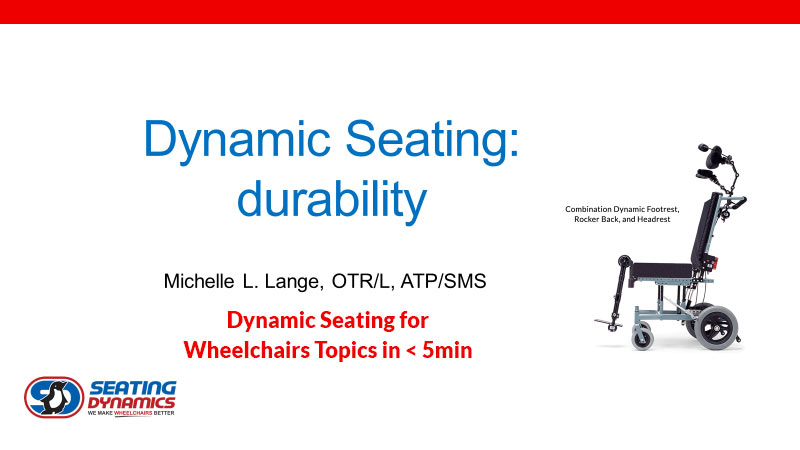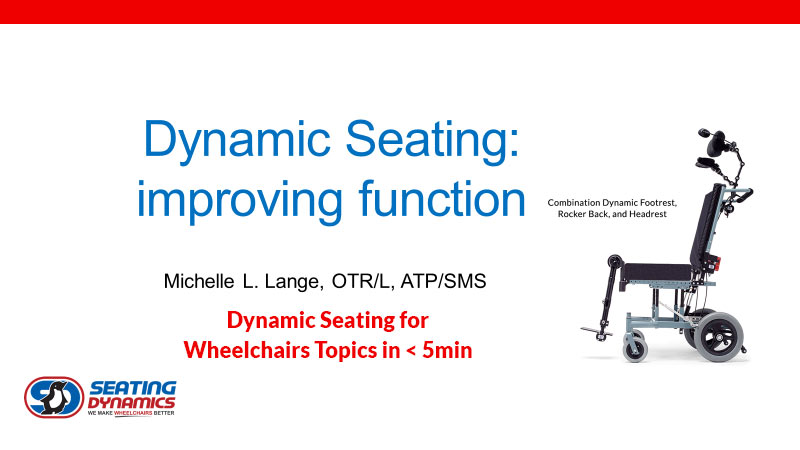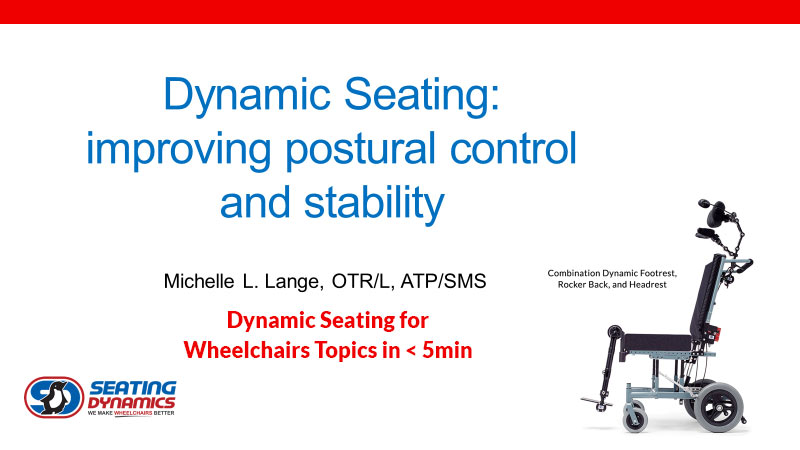Free CEU: Introduction to Dynamic Seating for Wheelchairs
Join OT Michelle Lange on demand for An Introduction to Dynamic Seating for Wheelchairs with IACET CEUs provided by NRRTS as an authorized provider.
Free CEU: Muscle Tone and Tone Management: General Positioning Strategies for Clients with Increased Tone
Join OT Michelle Lange for this Free CEU on Positioning Strategies for Clients with Increased Muscle Tone.
Free CEU: Muscle Tone and Tone Management: Dynamic Seating Intervention
Join OT Michelle Lange for this free CEU accredited webinar on Muscle Tone and Tone Management: Dynamic Seating Intervention.
Free CEU: Positioning the Head
Join OT Michelle Lange for Positioning the Head to explore strategies beyond the head support of a wheelchair, including specific positioning interventions and addressing visual issues.
Free CEU: Dynamic Seating: Moving past perceived barriers to provision of needed interventions
Join OT Michelle Lange for Dynamic Seating: Moving past perceived barriers to provision of needed interventions with IACET CEUs provided by NRRTS as an authorized provider.
Quick Class: Dynamic Seating – General Clinical Indicators
Dynamic seating has many potential applications. Dynamic components absorb and diffuse force, protecting the wheelchair user from injury caused by sustained and/or repeated forces and reducing damage to the seating system and wheelchair.
Quick Class: Dynamic Seating – Assessment
It is not typically realistic to trial Dynamic Seating components as the frame may need to be modified. Instead, we can simulate the effects of Dynamic Seating during the assessment to determine if these components are indicated.
Quick Class: Dynamic Seating – Durability
Dynamic Seating is often used to prevent equipment breakage, specifically the wheelchair frame and seating system. The Dynamic components absorb strong, repeated, sudden, and/or sustained forces, hence protecting vulnerable areas of the seating and mobility base. But what about the Dynamic Components themselves? Just how durable are these?
Quick Class: Dynamic Seating – Improving Function
Dynamic Seating can improve function, including medical functioning. This Quick Class reviews specifics supported by research.
Quick Class: Dynamic Seating – Improving Postural Control and Stability
Dynamic seating provides resistance to movement initiated by the wheelchair user, usually through spring or elastomer type mechanisms or other resistive, but mobile components. Movement against resistance has been demonstrated to increase strength in people with increased muscle tone without an increase in spasticity. Increased muscle strength can, in turn, improve both postural control and functioning.

